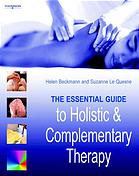

Most ebook files are in PDF format, so you can easily read them using various software such as Foxit Reader or directly on the Google Chrome browser.
Some ebook files are released by publishers in other formats such as .awz, .mobi, .epub, .fb2, etc. You may need to install specific software to read these formats on mobile/PC, such as Calibre.
Please read the tutorial at this link. https://ebooknice.com/page/post?id=faq
We offer FREE conversion to the popular formats you request; however, this may take some time. Therefore, right after payment, please email us, and we will try to provide the service as quickly as possible.
For some exceptional file formats or broken links (if any), please refrain from opening any disputes. Instead, email us first, and we will try to assist within a maximum of 6 hours.
EbookNice Team

Status:
Available4.4
35 reviews
ISBN 10: 1844800261
ISBN 13: 9781844800261
Author: Helen Beckmann, Suzanne E Le Quesne, HABIA
After more than a decade of stability or improvement, the mental health of adolescents plunged in the early 2010s. Rates of depression, anxiety, self-harm, and suicide rose sharply, more than doubling on many measures. Why?
In The Anxious Generation, social psychologist Jonathan Haidt lays out the facts about the epidemic of teen mental illness that hit many countries at the same time. He then investigates the nature of childhood, including why children need play and independent exploration to mature into competent, thriving adults. Haidt shows how the “play-based childhood” began to decline in the 1980s, and how it was finally wiped out by the arrival of the “phone-based childhood” in the early 2010s. He presents more than a dozen mechanisms by which this “great rewiring of childhood” has interfered with children’s social and neurological development, covering everything from sleep deprivation to attention fragmentation, addiction, loneliness, social contagion, social comparison, and perfectionism. He explains why social media damages girls more than boys and why boys have been withdrawing from the real world into the virtual world, with disastrous consequences for themselves, their families, and their societies.
Most important, Haidt issues a clear call to action. He diagnoses the “collective action problems” that trap us, and then proposes four simple rules that might set us free. He describes steps that parents, teachers, schools, tech companies, and governments can take to end the epidemic of mental illness and restore a more humane childhood.
Haidt has spent his career speaking truth backed by data in the most difficult landscapes—communities polarized by politics and religion, campuses battling culture wars, and now the public health emergency faced by Gen Z. We cannot afford to ignore his findings about protecting our children—and ourselves—from the psychological damage of a phone-based life.
Part 1: Core Knowledge for Therapists
Chapter 1: Health and Safety
Workplace Safety Regulations
Hygiene and Infection Control
First Aid Basics
Emergency Procedures
Chapter 2: Foundations of Chemistry
Basic Chemical Principles relevant to therapies (e.g., pH, compounds)
Understanding Product Ingredients
Chapter 3: Understanding Energy
Concepts of Energy in Holistic Therapies
Chakras, Auras (if applicable to the scope)
Chapter 4: Anatomy and Physiology
The Human Body Systems (Skeletal, Muscular, Circulatory, Lymphatic, Nervous, Endocrine, Digestive, Respiratory, Urinary, Reproductive, Integumentary)
Functions of Each System
Pathologies relevant to therapy contraindications
Chapter 5: Client Care
Client Consultation and Assessment
Communication Skills
Confidentiality and Professional Ethics
Record Keeping
Contraindications and Referrals
Chapter 6: Nutrition
Basic Principles of Healthy Eating
Role of Nutrition in Wellness
Dietary Considerations for Clients
Part 2: Practical Therapy Modalities
Chapter 7: Posture and Figure Analysis (Often part of body massage/holistic treatments)
Chapter 8: Classification of Massage Techniques
Chapter 9: Body Massage
Techniques (Effleurage, Petrissage, Tapotement, Friction, Vibration)
Benefits and Contraindications
Full Body Routine
Chapter 10: Aromatherapy
History and Principles of Aromatherapy
Essential Oils Directory (Properties, Uses, Safety Data)
Carrier Oils
Blending Techniques
Application Methods
Chapter 11: Chemistry and Essential Oils Directory (Could be integrated into Aromatherapy or a separate, more detailed section)
Chapter 12: Holistic Facial
Skin Analysis
Cleansing, Toning, Exfoliation, Masking
Facial Massage Techniques
Product Selection
Chapter 13: Indian Head Massage
History and Benefits
Techniques and Sequence
Contraindications
Chapter 14: Reflexology
History and Principles
Foot Mapping (Reflex Points)
Reflexology Techniques
Treatment Sequence
Chapter 15: Stress Management
Understanding Stress
Holistic Approaches to Stress Reduction
Relaxation Techniques (Breathing, Meditation, etc.)
Chapter 16: Crystal Therapy
Properties of Crystals
Crystal Layouts and Healing Techniques
Cleansing and Charging Crystals
Chapter 17: Colour Therapy
Principles of Colour Therapy
The Colour Spectrum and its Effects
Application Methods
Chapter 18: Thermal Auricular Therapy (Hopi Ear Candling)
History and Principles
Procedure and Benefits
Contraindications
Chapter 19: Reiki
History and Principles of Reiki
Hand Positions and Energy Flow
Reiki Treatment Protocol
Chapter 20: Hot Stone Therapy
Benefits and Contraindications
Types of Stones and Heating Methods
Techniques and Stone Placement
Part 3: Business and Professional Development
Chapter 21: Managing and Marketing
Setting Up a Business
Marketing and Promotion
Client Retention
Professional Development and Continuous Learning
Insurance and Legal Responsibilities
Tags: Helen Beckmann, Suzanne E Le Quesne, HABIA, essential, guide